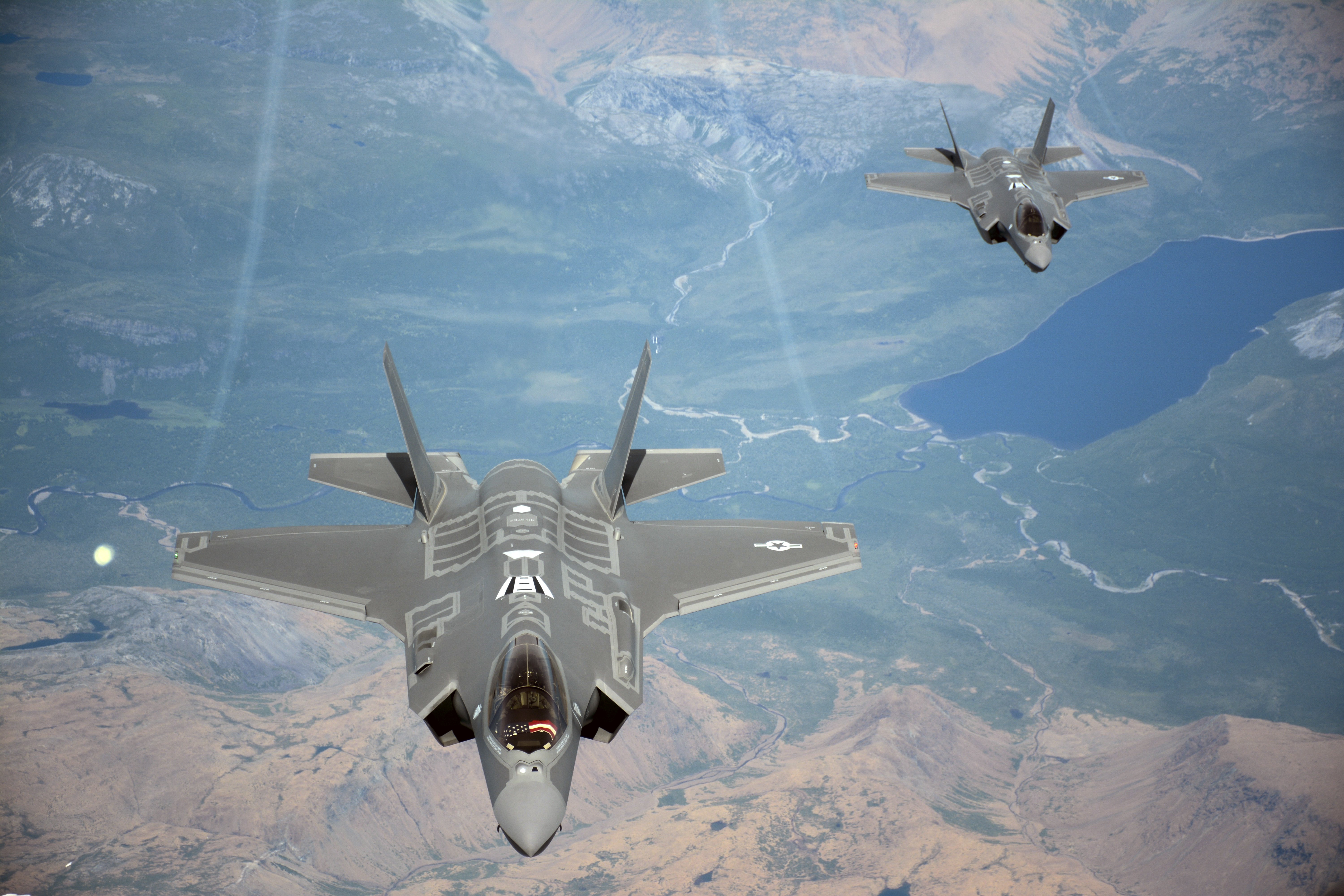
F-35A Lightning II aircraft receive aerial refuelings from a Travis KC-10 Extender July 13, 2016 on the flight from England to the United States. US Air Force photo.
CAPITOL HILL — Lawmakers concerned with a recent uptick in deadly military aviation incidents pressed Air Force, Navy, and Marine Corps leaders for details and possible solutions during a Thursday hearing.
In the past three and a half weeks, 16 service members were killed in aviation accidents, said Rep. Mike Turner (R-Ohio), chair of the House Armed Services tactical air and land forces subcommittee.
“Let there be no doubt that we are experiencing a crisis in military readiness and we must address this now,” Turner said. “More U.S. military service members have died in aircraft mishaps over the past year than have died while serving in Afghanistan.”
Since March, the following deadly incidents have occurred:
- March 14, Navy F/A-18F Super Hornet crashed on the approach to Naval Air Station Key West, killing both aircrew.
- March 15, an Air Force HH-60 Pave Hawk helicopter crashed in Western Iraq, killing seven airmen.
- April 3 an Air Force F-16 from the Thunderbirds demonstration crashed killing the pilot.
- April 3, a CH-53E Super Stallion helicopter crashed during a training exercise in California, killing four Marines onboard.
- April 6, an Army AH-64E Apache crashed near Fort Campbell, killing two soldiers.
Each will be investigated to determine a root cause, said Vice. Adm. Paul Grosklags, the commander of the Naval Air Systems Command. With the Navy receiving a funding increase in both the Fiscal Year 2018 and 2019 budgets the future mishap rate could decrease as the Navy plans to direct more money to aircraft maintenance, spare parts, and providing more flight time for aircrews, Grosklags said.
“Each one of those mishaps will have a unique cause, so there’s not a universal panacea,” he said.
Turner suggested the Navy could and should be doing more to determine if there are systemic issues causing what he called an, “aggregate of mishaps.”
“Admiral, I appreciate your dedication to get to a root cause, but I don’t buy that, that it’s merely just individual incidents,” Turner said.
The Marine Corps is focusing on improving their aircraft maintenance, including recently spending about $13.5 million on reenlistment bonuses for enlisted personnel who are qualified aircraft repair and maintenance inspectors or quality assurance staff, said Lt. Gen. Steven Rudder, the deputy commandant for aviation.
“We had 676 Marines, corporals, sergeants, staff sergeants take that,” Rudder said.
These aircraft maintainers provide stability to the crews keeping the aircraft in working order, and help train the less experienced crew members, Rudder said.
When asked how to provide an update on solving the ongoing physiological episodes problem, Grosklags said the Navy was following suggestions made by a NASA report to look for more than mechanical fixes.
“Mechanical fixes, in the end as we’ve examined, have not panned out to not be as valuable as originally thought,” Grosklags said.
Instead, the Navy looking for PE root causes. An example, Grosklags said, was a one PE caused by a pilot inadvertently hitting a switch. Initially, he said, the Navy did not think it was necessary to move the switch location. But after further investigation, Grosklags said Navy investigators found the location was a problem.
“It turned out the pilots were hitting that switch many more times, that weren’t causing PE but had the potential to,” Grosklags said.
Turner also asked about a possible safety issue involving the half-a-million-dollar F-35 pilot helmet. During a visit to Hill Air Force Base last week, Turner said pilots said their helmets were not providing adequate visual acuity during night operations. They’d heard Marine Corps and Navy F-35 pilots had similar experiences.
The problem was a software issue, Rudder said. Pilots with the first Marine Corps F-35B operational squadron, currently deployed USS Wasp (LHD-1), reported the night vision was a bit fuzzy, but Rudder said he’d been told the problem was being fixed.
Rep. Niki Tsongas, (D-Mass.), the subcommittees ranking member asked for more information about a recently reported F-35 production pause.
The F-35 joint program office did not accept delivery of 5 aircraft because of a problem discovered during an inspection of the fighters, said Lt. Gen. Arnold Bunch, in charge of research and development for the Air Force. Of the jets on hold, Bunch said three were for the Air Force, one was for Norway and one was for Australia. These are different versions than the F-35 used by the Marine Corps or Navy.
The problem is a hole drilled into the aircraft was not properly treated for corrosion prevention, and it was not corrected, Bunch said.
Adding to Bunch’s statement, Grosklags said, “This is a mistake made by the contractor during production and they should pay for that out of their bottom line not out of our top line.”
